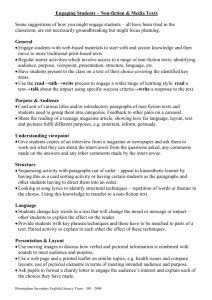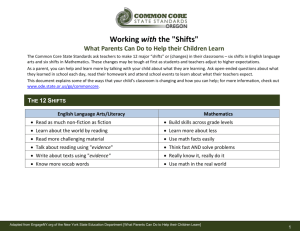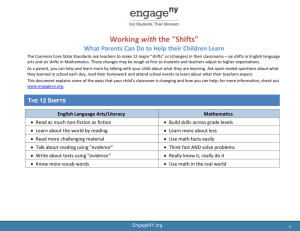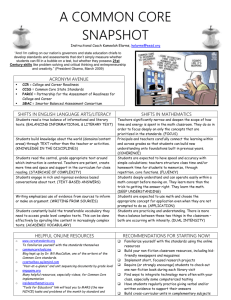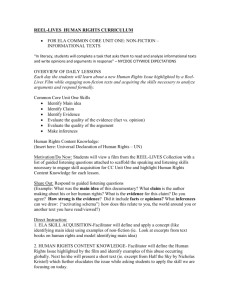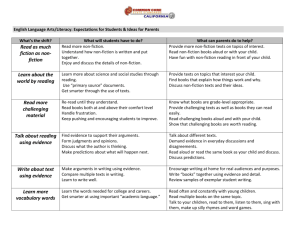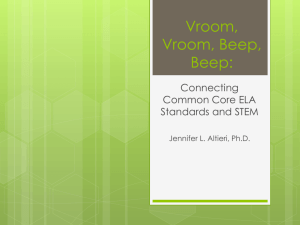Common Core State Standards in English Language Arts and Literacy:
advertisement
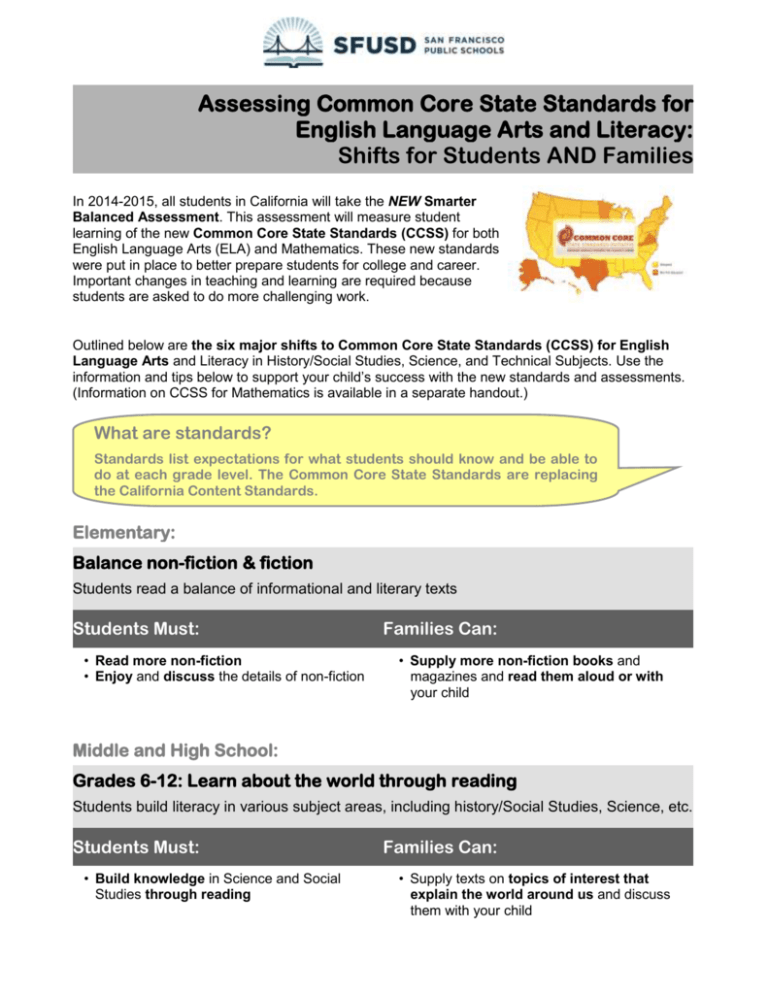
Assessing Common Core State Standards for English Language Arts and Literacy: Shifts for Students AND Families In 2014-2015, all students in California will take the NEW Smarter Balanced Assessment. This assessment will measure student learning of the new Common Core State Standards (CCSS) for both English Language Arts (ELA) and Mathematics. These new standards were put in place to better prepare students for college and career. Important changes in teaching and learning are required because students are asked to do more challenging work. Outlined below are the six major shifts to Common Core State Standards (CCSS) for English Language Arts and Literacy in History/Social Studies, Science, and Technical Subjects. Use the information and tips below to support your child’s success with the new standards and assessments. (Information on CCSS for Mathematics is available in a separate handout.) What are standards? Standards list expectations for what students should know and be able to do at each grade level. The Common Core State Standards are replacing the California Content Standards. Elementary: Balance non-fiction & fiction Students read a balance of informational and literary texts Students Must: • Read more non-fiction • Enjoy and discuss the details of non-fiction Families Can: • Supply more non-fiction books and magazines and read them aloud or with your child Middle and High School: Grades 6-12: Learn about the world through reading Students build literacy in various subject areas, including history/Social Studies, Science, etc. Students Must: • Build knowledge in Science and Social Studies through reading Families Can: • Supply texts on topics of interest that explain the world around us and discuss them with your child All Grades: Read and analyze more challenging material Students read texts that increase in complexity over time, to prepare for college and career Students Must: • Read and re-read material at comfort level AND work with more challenging material Families Can: • Provide texts children want to read and can read comfortably, AND • Read challenging material with them to show how it is worth reading Discuss reading using evidence Students use text to enhance rich and thoughtful conversations Students Must: • Find evidence to support their arguments about the text and what the author is trying to say. Families Can: • Ask students about what they are reading and ask them to explain why the text supports their thinking Write from non-fiction sources using evidence Students use evidence to inform or make arguments Students Must: • Make arguments in writing using evidence from one or more sources Families Can: • Encourage writing at home using evidence and details from text Increase academic vocabulary Students build a strong vocabulary to access complex grade level texts Students Must: • Learn how to use professional and academic words in precise and varied ways Families Can: • Use a wide range of vocabulary to talk about ideas, play word games, make up silly rhymes Have questions? Talk to your child’s teacher to learn about CCSS for ELA at your child’s grade level, or go to the SFUSD website to learn more at www.sfusd.edu.

